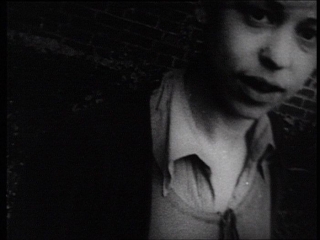Date: 23 January 2017 | Season: Shoot Shoot Shoot 2016 | Tags: Gregory Markopoulos, Shoot Shoot Shoot
SHOOT SHOOT SHOOT: THE LONDON FILM-MAKERS’ CO-OP
Monday 23 January 2017, at 6:30pm
Glasgow CCA
50th anniversary talk and book launch presented by LUX Scotland
In late 1966, a manifesto announcing the formation of the London Film-Makers’ Co-operative was published in the first issue of the organisation’s magazine Cinim:
LONDON FILM-MAKERS COOP ABOUT TO BE LEGALLY ESTABLISHED STOP PURPOSE TO SHOOT SHOOT SHOOT SHOOT SHOOT STOP NEVER STOP NO BREAD NO PLACE TO LAY OUR HEADS NO MATTER JUST MIND IF YOU WANT TO MAKE MONEY STOP IF YOU LIKE BRYAN FORBES STOP IF YOU READ SIGHT AND SOUND STOP IF YOU WANT TO MAKE FILMS I MEAN FILMS COME ALL YOU NEEDS IS EYES IN THE BEGINNING STOP GEN FROM 94 CHARING CROSS ROAD W.C.2 PARTURITION FINISHED SCREAMS BEGIN STOP
This memo was dispatched from the LFMC’s first base at Better Books, a shop on London’s Charing Cross Road, where the organisation evolved from a film society into a distributor of experimental and non-commercial films. The ambition to stimulate the production of new work was there from the beginning, but it was to take a few more years for the Co-op to establish its own film workshop, a unique facility in which its filmmakers fashioned a radically new form of cinema.
In this illustrated talk, Mark Webber will trace the evolution of the LFMC from its emergence in the underground scene to becoming one of the major centres of a worldwide network of avant-garde film culture in the mid-1970s.
Mark Webber is an independent curator of artists’ film and video, and a co-founder of The Visible Press. His previous books as an editor include Two Films by Owen Land (2005), Film as Film: The Collected Writings of Gregory J. Markopoulos (2014) and Peter Gidal. Flare Out: Aesthetics 1966–2016 (2016).
To commemorate the 50th anniversary of its predecessor, LUX have recently published Shoot Shoot Shoot: The First Decade of the London Film-Makers’ Co-operative 1966–76. The book gathers together new and historical texts, interviews, film stills, photographs and archival documents, and will be available this evening at a discounted price.
Malcolm Le Grice, Berlin Horse, 1970, 16mm, colour, sound, 7 min
Peter Gidal, Hall, 1968-69, 16mm, b/w, sound, 8 min
Marilyn Halford, Footsteps, 16mm, 1975, b/w, sound, 7 min
Guy Sherwin, At the Academy, 1974, 16mm, b/w, sound, 5 min
Lis Rhodes, Dresden Dynamo, 1974, 16mm, colour, sound, 5 min
John Smith, Associations, 1975, 16mm, colour, sound, 7 min
PROGRAMME NOTES
SHOOT SHOOT SHOOT: THE LONDON FILM-MAKERS’ CO-OP
Monday 23 January 2017, at 6:30pm
Glasgow CCA
BERLIN HORSE
Malcolm Le Grice, UK, 1970, 16mm, colour, sound, 7 min
“Berlin Horse is an exploration of the film medium. It is also concerned with making certain conceptions about time in a more illusory way than I have been inclined to explore in many other of my films. It attempts to deal with some of the paradoxes of the relationships of the ‘real’ time which exists when the film was being shot, with the ‘real’ time which exists when the film is being screened, and how this can be modulated by technical manipulation of the images and sequences.”
HALL
Peter Gidal, UK, 1968-69, 16mm, b/w, sound, 10 min
“Demystified reaction by the viewer to a demystified situation; a cut in space and an interruption of duration through (obvious) jumpcut editing within a strictly defined space. Manipulation of response and awareness thereof: through repetition and duration of image. Film situation as structured, as recorrective mechanism.” (Notes from 1969) “Still utilizing at that time potent (signifying, overloaded) representations.” (1972)
AT THE ACADEMY
Guy Sherwin, UK, 1974, 16mm, b/w, sound, 5 min
“Makes use of found footage, hand printed on a simple homemade contact printer and processed in the kitchen sink. At the Academy uses displacement of a positive and negative sandwich of the same loop. Since the printer light spills over the optical soundtrack area, the picture and sound undergo identical transformations.”
FOOTSTEPS
Marilyn Halford, UK, 1975, 16mm, b/w, sound, 6 min
“Footsteps is in the manner of a game re-enacted, the game in making was between the camera and actor, the actor and cameraman, and one hundred feet of film. The film became expanded into positive and negative to change balances within it; black for perspective, then black to shadow the screen and make paradoxes with the idea of acting, and the act of seeing the screen. The music sets a mood then turns a space, remembers the positive then silences the flatness of the negative.”
DRESDEN DYNAMO
Lis Rhodes, UK, 1974, 16mm, colour, sound, 4 min
“It was perhaps the question of sound – the uncertainty of any synchronicity between what was seen and what was said that began an investigation into the relationship of sound to image. Dresden Dynamo is a film that I made without a camera – in which the image is the soundtrack, the soundtrack the image. A film document.”
ASSOCIATIONS
John Smith, UK, 1975, 16mm, color, sound, 7 min
“Images from magazines and color supplements accompany a spoken text taken from Word Associations and Linguistic Theory by the American psycholinguist Herbert H Clark. By using the ambiguities inherent in the English language, Associations sets language against itself. Image and word work together/against each other to destroy/create meaning.” (John Smith)
Back to top
